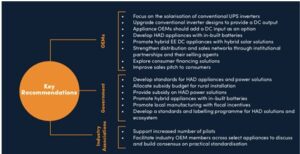Indian Power sector is in a rapid growth phase and in a phase of undergoing rapid change – change in a way they used to operate. A special emphasis is laid by the government on the electricity distribution industry to improve their operational and business efficiency. On an average the SEBs suffer from an ATC loss in the upwards of 30-35 % and in some areas even more. The R-APDRP programme has laid emphasis on the reform and implementation of IT systems (see our earlier blog on R-APDRP). ERP (Enterprise Resource Planning) is one of the most important enablers in providing an environment for integration of utility applications.
The typical characteristics of an electricity distribution business are:
- Wide Geographic delivery areas
- Infrastructure is distributed
- Equipment installed and maintained for 30 years or more.
- Uncertain business models
- Evolving Deregulation
A standard Utility Management System encompasses integrated line and meter information with an associated record of meter reading, billing and payment history for an account. Robust ERP software solutions offer additional enterprise level functionality such as customer relationship management, service management, warranty and repair, and complete business intelligence and reporting.
In a nutshell, ERP requirements for electricity distribution can be listed as:
- Customer care & Customer relationship management
- Call system integration
- Meter Management and meter information
- Meter reading
- Budget based billing, Pro-rating and intelligent estimating
- GIS interface
- Work management and field service management
- Repair and maintenance of Equipments and meters
- Business Intelligence & reporting
- ATC losses analysis including settlements
- Governance, Risk, and Regulatory Compliance capability
- Outage management
ERP Vendors like SAP, Oracle have specific ERP products to meet Utility Industry requirements.
However, it will be difficult to find an ERP software which can meet all the requirements for the electricity distribution sector. Many of the requirements specific to Indian market have to be a bespoke development. Also, some of the requirements have to be met by standalone specific software which need to be integrated with ERP (for example ERP with Street level routing software).
Future blogs will go layers deeper into IT and ERP aspects of utility distribution and its integration to create Smart grid.
Post by: Ritesh Rajput @ IBM Utilities division*
Note: * pManifold welcome external experts to share their ideas to raise System Thinking.



